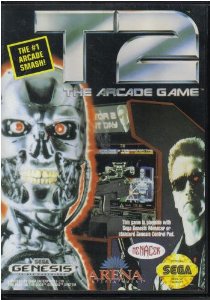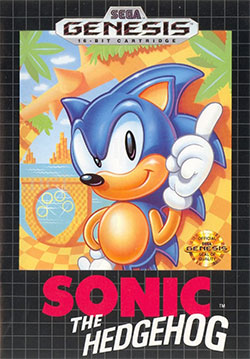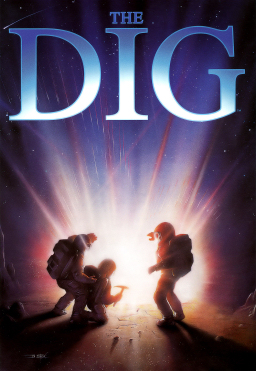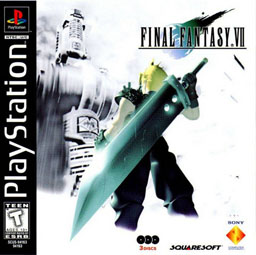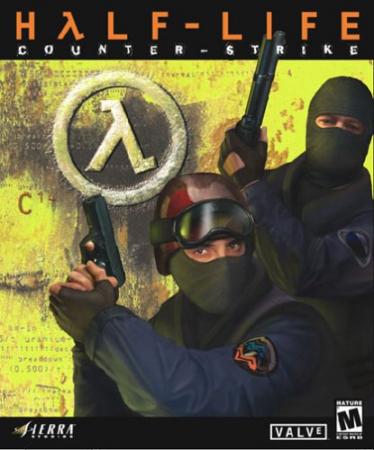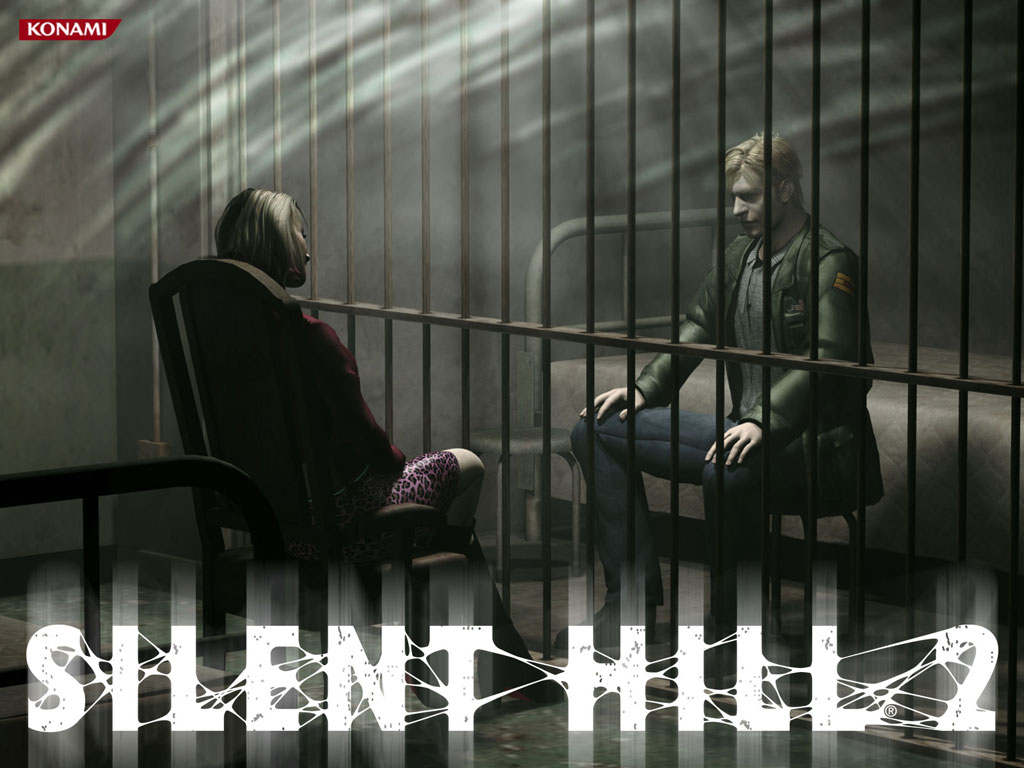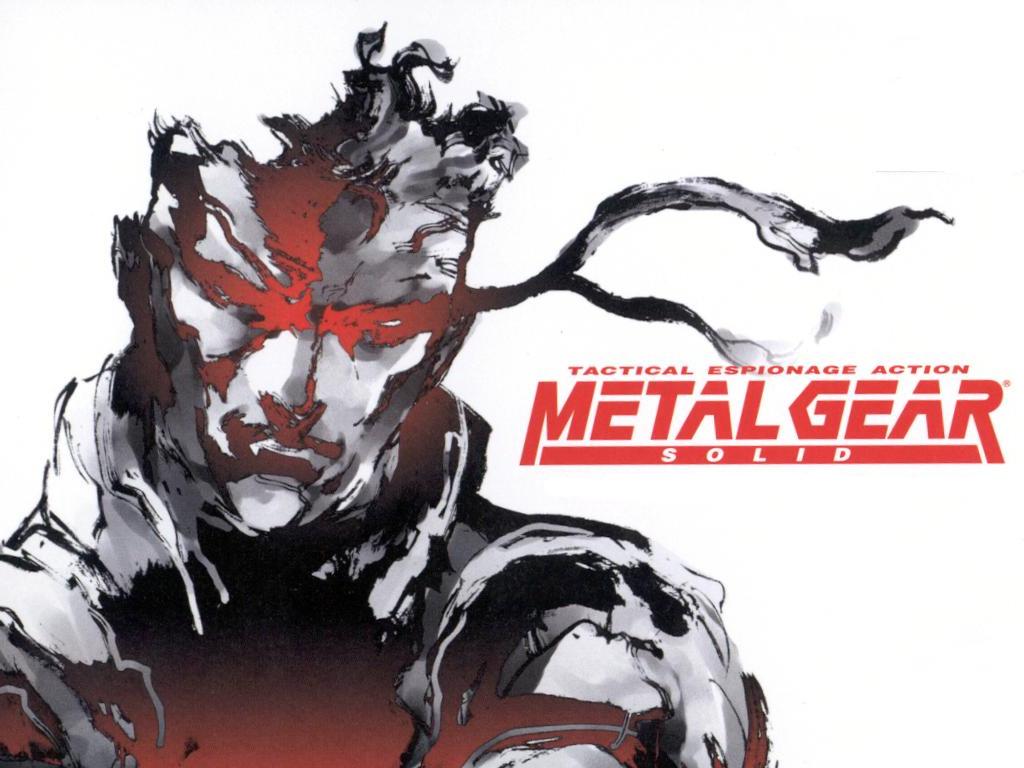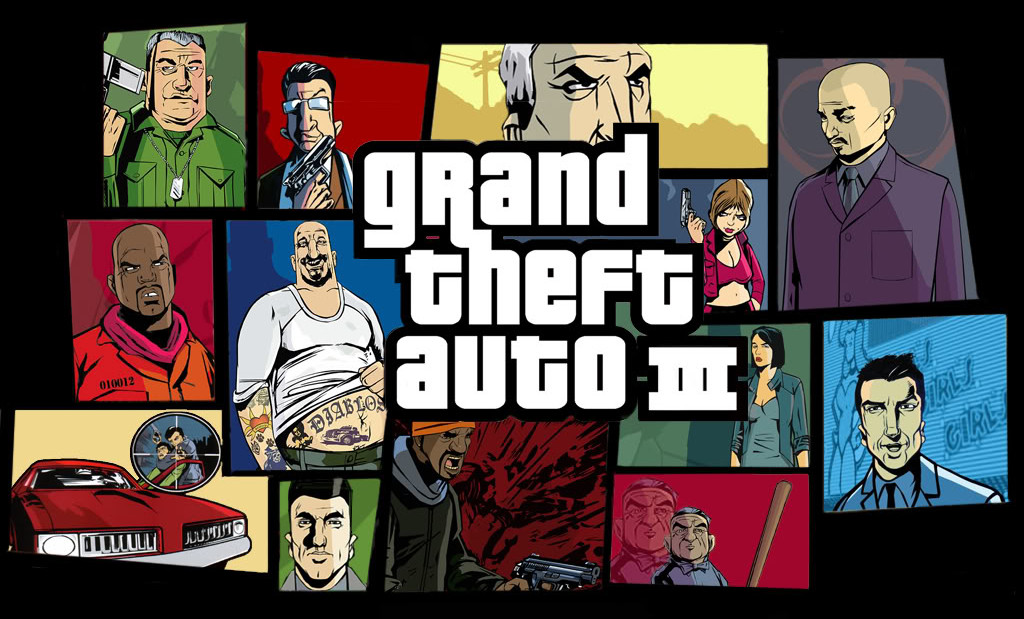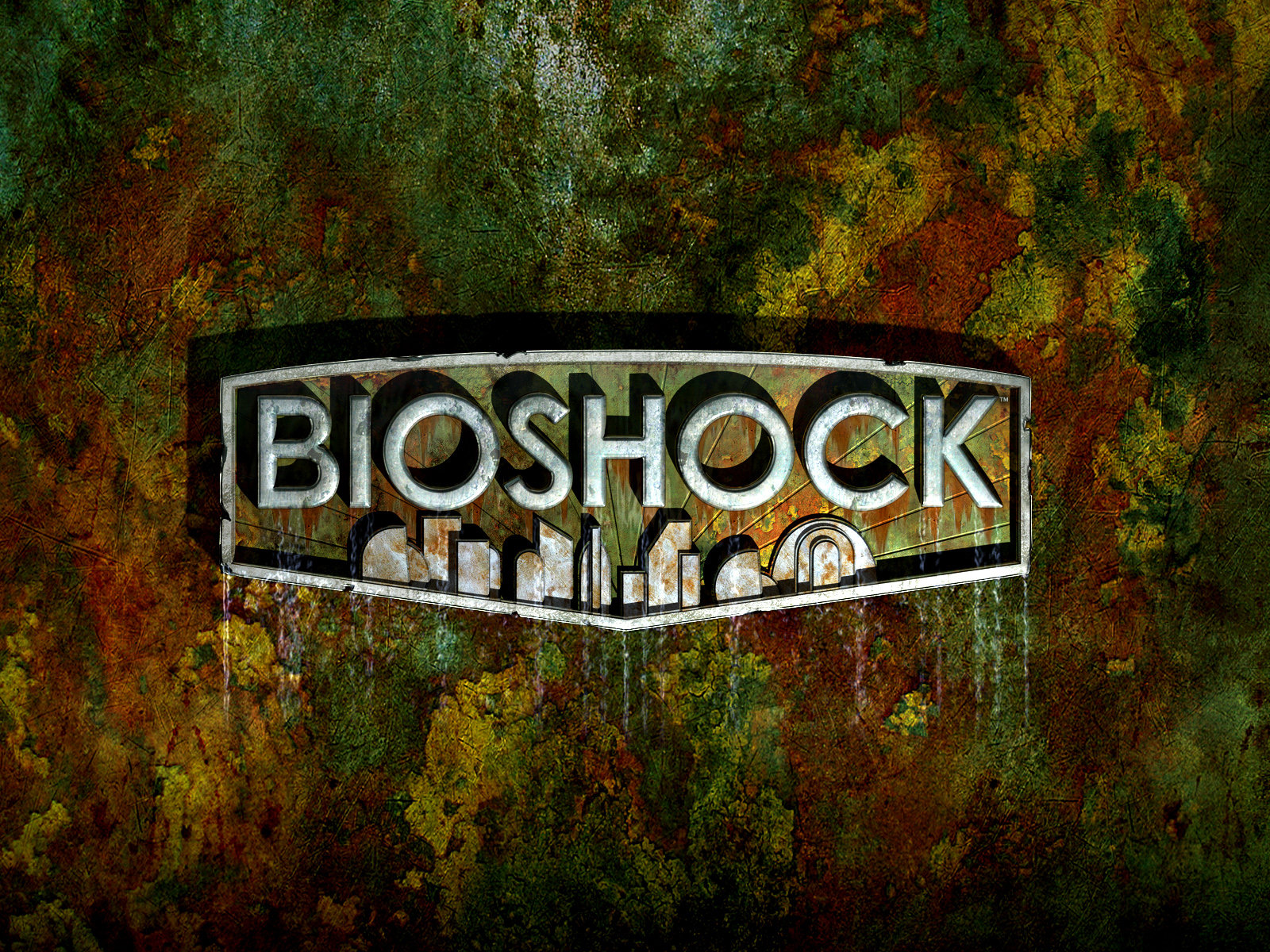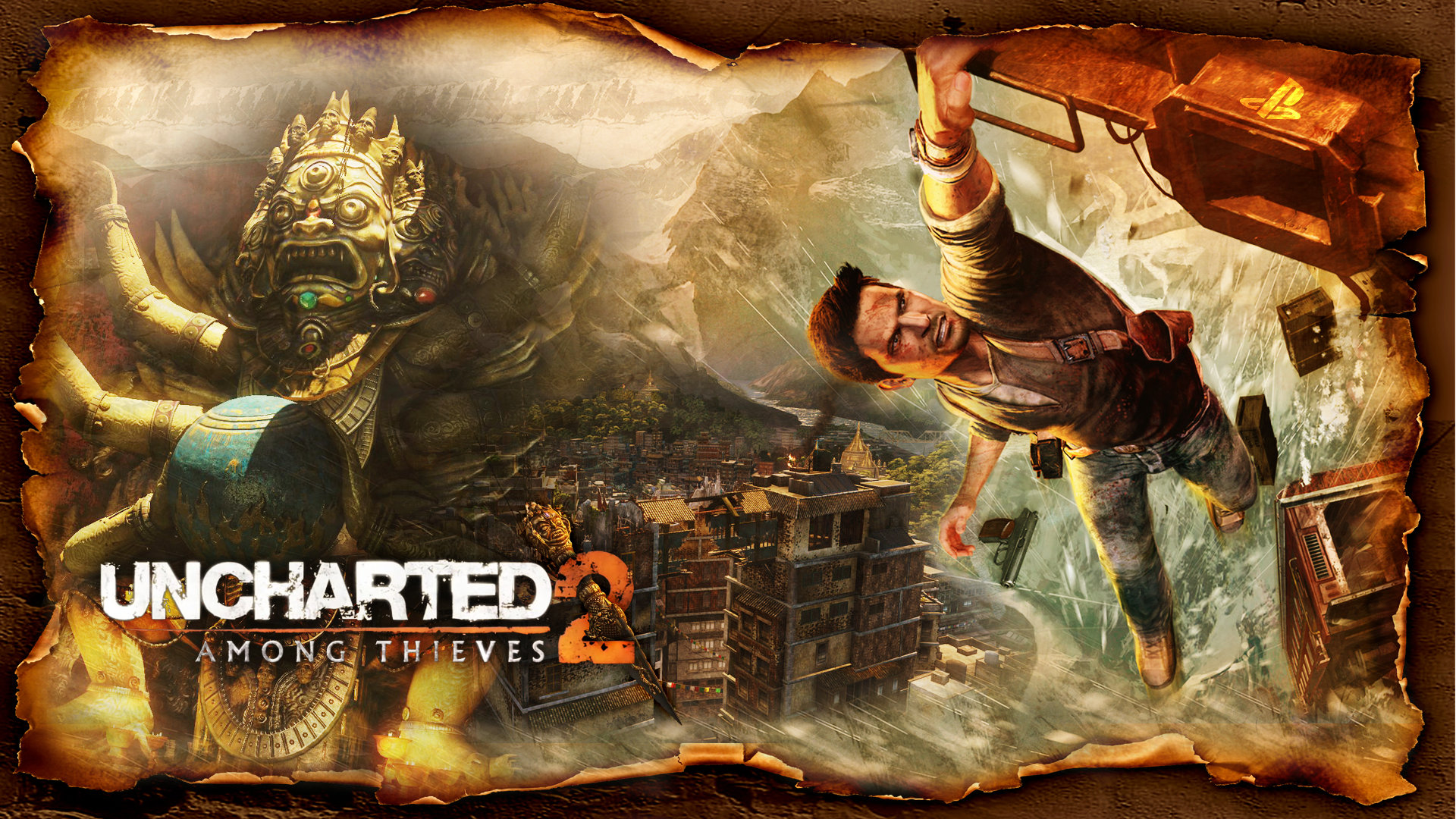See, gaming isn’t just something I do when I’m bored, and I need to kill time. I’m consistently fascinated by gaming as a medium, and how it’s progressing. I think often, perhaps too much, about what makes my favorite games so compelling, and why certain ones don’t live up to my expectations.
This article will be a little bit different than what I usually post here. I won’t be talking specifically about the advancement of gaming, or the most influential games in the history of the medium. I will be talking about the games that shaped MY experience as a “gamer,” for lack of a better word. Some of these are classics, some are nearly unplayable by modern standards, but each left a mark and showed me something new about this medium I love so much.
QUICK NOTE: As usual, I talk openly about the games below. Most entries aren’t particularly spoiler-heavy, but you may want to be careful about Silent Hill 2 and Bioshock, if you haven’t played those games. There are also some references to late-game events in Final Fantasy VII, but I’d be surprised if you could make any sense of them without having played the game.
1. Terminator 2: Judgment Day – Arcades
Terminator 2: Judgment Day is, I believe, the first video game that I ever played. I might have goofed around with Mixed-Up Mother Goose on my dad’s computer before then, but T2 was at least one of the first two.
It probably helps to understand that, as a kid, I was OBSESSED with Terminator 2. Given that it’s an R-rated movie, that may seem wrong, but take a second and think about what Terminator 2 is. It’s a movie about a kid who rides dirt bikes and hacks banks and has a giant killer robot who will do ANYTHING HE SAYS. His mom is a badass, he’s the future leader of mankind, and the villain is a transforming visual effect with knives for arms. Say what you want about the violence, but kids love wish fulfillment, and T2 is the ultimate boyhood fantasy movie.
So, when I passed by an arcade with my dad one time, I couldn’t help but notice the Terminator 2 arcade box, complete with its uzi lightgun controllers. We played a few times, at various arcades, and it was ultimately the game that convinced my dad to buy us a Sega Genesis for Christmas, with the home version of T2.
Now, by most standards, the Terminator 2 arcade game isn’t that great, and is near unplayable on Sega Genesis. Instead of a lightgun, you had to control a slow onscreen reticle. The game was designed to eat a bunch of quarters at the arcade, so it was relentlessly difficult, and I’m fairly sure that the reticle of the console version wasn’t even quick enough to keep up with the stuff in the later levels. To complete the game, you basically HAD to enter a cheat code for infinite lives. But it was my gateway into console gaming, which has been my bread-and-butter for most of my game-consuming life.
2. Sonic the Hedgehog – Sega Genesis
The first Sonic the Hedgehog rocked my world. As obvious as it all seems in retrospect, just the idea of using both hands to directly control on onscreen figure was brand new to me. It took me an embarrassingly long amount of time to get used to running and jumping simultaneously, and just getting through the first Zone (Act 3 in particular, with it’s rising/lowering platform section and insta-death spikes) was harrowing.
I’ll also admit that my interest in gaming may not have developed so quickly if it weren’t for the level select cheat code. With a simple input of up/down/left/right/A/Start at the title screen, I was not only able to jump ahead in the game, but to see exactly how much was there for me to try. After busting my little ass just to get to Marble Zone, it was mind-blowing to discover that I had barely scratched the surface of what the game had to offer. When I was stuck on a level, I could still jump ahead and check out the casino-influenced world of Spring Yard Zone, or the relative calm of Starlight Zone, or the watery grave that was Labyrinth Zone.
I was eventually able to complete the game from start to finish, and my skills and perseverance allowed me to enjoy all sorts of platformers. I allowed myself to get lost inside of Sonic the Hedgehog, and it was the first time gaming was a true passion for me.
3. The Dig – PC
The Dig was the first game I played that I could say was truly narrative-driven. As a young boy, this was earth-shattering. Since it was a Lucasarts Adventure Game, The Dig put strong writing (co-written by Orson Scott Card and Steven Spielberg), characterization, and exploration front-and-center. The pacing was far slower than anything else I was used to, but it managed to scratch a different itch that more kinetic games like Sonic didn’t even attempt.
What The Dig had that no other game seemed to at the time was a brilliant sense of discovery. Since my dad had purchased it, I had no real expectations. The first section, about a team of astronauts trying to blow an Earth-bound meteor off course with nuclear devices (in a manner much more believable than in, say, Armageddon), could have been the premise of the whole game. The cast was already interesting and well-defined, and the meteor and its interior were very intriguing. Then, when you snap a few mirror plates into place and you find yourself on an alien world, everything changed.
The Dig, alongside such early innovators like Myst, excelled in environmental storytelling. The alien world you visit isn’t full of aliens for you to talk to (or shoot, more likely than not). Instead, you’ve stumbled upon the ruins of a dead civilization, and your best way of understanding what happened there and how to get out is to explore. There are morphing diagrams that indicate how civilizations were built, and how certain mechanisms (like a crystal capable of bringing the dead back to life) worked. Most civilized life forms are dead, but the environment and its creatures are so full of life that it’s easy to look past.
This wasn’t technically my first adventure game. As mentioned previously, Mixed-Up Mother Goose was earlier, and I enjoyed that a lot as well. But The Dig tied its puzzles into an engaging narrative in a way that was new to me. As my team fell further apart and our goals began to run counter to each other, I never knew when my most recent progress would be stymied by a former companion, or when I would have to drop what I was doing and assist a potentially dangerous man fall further into self-destruction to get my own results. There were moments that were positively shocking, and the narrative imprinted on me in a major way
I was obsessed with this game. It got to the point where I even bought the novelization (by Allen Dean Foster) and devoured it. Storytelling within games has been a curiosity of mine ever since.
4. Final Fantasy VII – Playstation
It was 1999, and I had played Zelda: Ocarina of Time. However, we weren’t a “Nintendo” family; we had bought Sega consoles ever since that first Genesis. Given that meant that my last two consoles had been a 32x and a Sega Saturn, it was not the best run. After the Saturn “died”, I managed to convince my parents to get me a Playstation, which was essentially the Switzerland in the Nintendo-Sega Console War. I really liked the Playstation, and for the most part I was fine skipping out on the N64 and its fuzzy 3D graphics.
But man oh man, was Ocarina of Time cool.
So, as a bitter owner of everything-but-Nintendo, I wanted my own epic game. I knew that there was nothing that would truly rival OoT on the Playstation, but there was a little game I had heard of called Final Fantasy VII. I rented it a couple of times, and got hooked enough to buy it outright.
Given my Nintendo-aversion up to that point, FFVII was my entry point into the Final Fantasy series, and one of my first real RPG experiences. I had dabbled in RPGs on the Sega Channel from time-to-time, but given its lack of save data, I hadn’t gotten far into them. Final Fantasy VII captured me, and I had an incredible amount of respect for its storytelling.
Speaking of which, let’s talk about that storytelling. Final Fantasy VII was revered upon release for its epic scale, amazing cinematic sequences, and writing. However, years later, there was quite a backlash against it. I’ve gone back and forth on my opinion of its story. On the one hand, if you try to explain the plot as a whole, you sound like a crazy person. Here, let me give it a try: Final Fantasy VII is about a failed-soldier amnesiac who teams up with environmental terrorists to take down an evil corporation and defeat his former mentor, who is possibly descended from an ancient race and possibly part-alien, and wants to destroy the planet with an evil meteor, which can only be defeated by a force called Holy. Also, for a while it turns into a Godzilla movie.
And that’s not even mentioning the vampire guy or the remote-control teddy-bear fighter.
But what detractors tend to overlook is that, at its heart, Final Fantasy’s storytelling is episodic. Little of what I mentioned above makes sense together, but taken as small pieces, the narrative is always perfectly clear. It’s easy to get into the story of Cloud as a boy who tried to get away from his hometown and be a hero, became disillusioned, and is now back home and coming to terms with the cause he’s fighting for. Or the story of Cloud as Sephiroth’s underling and admirer, as his mentor slowly loses his mind and becomes somebody else entirely. Or the story of Yuffie and her family, or Red XIII and his village, or the attack of the Weapons, or hell, everything about Aeris.
This is because the creators of Final Fantasy VII (and really, FF’s IV through X, for the most part) realized that no good story can be stretched for the 60+ hours that the game takes to complete. It’s much easier to break that down into a number of smaller, more immediately compelling stories that can be worked into a larger whole. Playing Final Fantasy VII was the gaming equivalent of today’s Netflix binge-watching, devouring as many “episodes” as the viewer/player wants to in one sitting, all adding up to one larger story.
But at the time, I just loved it because it showed me that a game world could be larger and more immersive than I had ever known before.
5. Half-Life/Counter-Strike – PC
Okay, I’m cheating a little bit here. I didn’t get into Half-Life until a couple years later, when Counter-Strike was lighting the gaming world on fire. It was far from my first shooter (I had played the hell out of Doom 2 as a kid), but it still introduced me to a lot of new ideas.
For one, it was the sense of community around a game. I got into Counter-Strike and Half-Life (and Opposing Force) multiplayer before broadband was ubiquitous. At the time, I was rocking a 28 kbps dial-up modem. Even worse, there was something wrong with our phone signal and it usually only connected at about 11 kbps. This was less than ideal for online gaming.
Instead, I did what a lot of people did at the time: I went to a PC gaming/internet store. This was before the days of internet cafes, when computer nerds and gamers who didn’t want to lug around their PCs would meet at stores and pay hourly fees (around $8/hr, I think) to play PC games with each other. So, I’d go (with a parent) and play multiplayer games with strangers, most of which were older than me.
Multiplayer gaming was obviously not totally new to me, given that even games reaching back to Terminator 2 had 2-player support, but playing with more than 3 friends in a room was. It was incredibly fun to be able to shoot at the avatars of real people and being able to immediately hear their frustration, or joke/taunt each other as matches were beginning and ending. We had whole teams we could discuss strategy with, as opposed to just one buddy.
It was also my introduction into mouse+keyboard FPS control. Being able to aim separately from my movement felt natural to me (far moreso than I found dual-stick shooting to be when Timesplitters and Halo first released), and it added a whole layer of skill that was missing from, say Doom.
Now I play these kinds of games online, but that still doesn’t conjure up the same feeling of comradery or competition that being physically near the other players does. Convenience be damned, I miss the days of the LAN parties.
6. SIlent Hill/Silent Hill 2 – Playstation
I have a soft spot for horror games, but few actually get to me. Even as an elementary schooler, Resident Evil never did much beyond give me jump scares and occasionally make me worry about how long it’s been since I saved my game. The first two Silent Hill games, on the other hand, managed to creep me out on a deeper level by focusing more on environment and rule-breaking and less on “gotcha!” moments.
Take, for instance, the start of Silent Hill. Your situation and goal are simple: you crashed your car, your daughter is missing, and you need to find her. So, you wander into town, where fog prevents you from seeing more than a few meters in front of you. You eventually follow a blood trail back to an alleyway. As you progress, it gets darker, until your only source of light is the lighter in your hand. Then, you get attacked by child-sized featureless monsters with knives, you’re locked in, and your only option is to die.
Obviously, the game goes on, but the stage is set. I also love that the game goes out of its way to confuse you. In the hospital, you enter an elevator with only 3 floors. You check each one, and there’s nowhere to go. Confused, you go back in, but this time there’s a 4th floor. The game doesn’t point this out, so you start to think you missed something. Then, walking along the 4th floor, it starts to elongate out in front of you and the walls slowly go red. You’re walking into the hellish otherworld, and there’s no way back.
Beyond just the scares, the Silent Hill games introduced me to the idea that games could contain symbolism, just like any other medium. In the original game, it can be argued that the town is punishing Harry for having taken his “daughter” (who was actually a reborn manifestation of Silent Hill’s demon-God’s mother-on-earth) and never telling her that she wasn’t truly his own.
The sequel is far less vague in its purposes: the town is punishing James Sunderland for murdering his wife. More obtusely, the creatures are representative of his motives for the crime: the mannequins represent his sexual frustration, the “patient demons” (with their flesh-membrane strait jackets) represent his feeling trapped in his marriage, and Pyramid Head represents all of this and his overwhelming guilt for the action. Meanwhile, Maria exists as the manifestation of everything he wished his terminally ill wife could have been in her final moments, and even the other “real” people in town complement James’ story (Angela being a victim of male-on-female abuse, and Eddie being a murderer).
Very few games at the time were approaching their story material on this level, and even now it’s unusual. When I started to get into literary analysis in late Junior High and High School, I was pleasantly surprised to see that similar depth of analysis could be applied to a video game.
7. Metal Gear Solid – Playstation
Like Final Fantasy VII, this is one that struck me for its story at the time. It’s also an example of a story that is perhaps a bit silly and convoluted when you break it down.
But Metal Gear Solid really did feel like a good action-espionage flick. It helped that the production quality was excellent. The voice acting was the best I had heard outside of Lucasarts Adventure Games, and it went a long way towards creating believable characters. I may have been fighting cyborg ninjas and walking nuclear-equipped battle tanks, but Snake seemed like a real person with feelings of regret, and poor Otacon really did love Sniper Wolf. You could tell from his voice!
Metal Gear Solid also gets points for being a little more constrained than it’s absurd, anything-goes sequels. Despite the silliness, MGS told a single, complete story, and it wasn’t that hard to play along. Hideo Kojima may have cinema-envy, but this certainly benefited from that inclination.
8. Grand Theft Auto 3 – Playstation 2
I went back-and-forth on whether to include this one, since it’s so commonly referenced as a game-changer. But it would probably be wrong to skip over, given how completely unprecedented it was when it released.
I remember getting it on release day with my friend Scott, just on a whim. We brought it back, finished the first mission, and were sort of baffled as to what came next. It didn’t jump into a new mission, or go to a cutscene, it just sort of…went on. From there, you could do whatever you wanted. You could drive to a mission, or run around and steal some cars, or get killed/arrested…and the game didn’t stop. Death wasn’t the end, it just took some cash and made you respawn at a hospital.
It’s hard to understand now, but the feeling of “what do I do next?” after that first mission was simultaneously liberating and a bit scary. GTA III ushered in a brand new method of game design that is, arguably, the norm today.
9. Bioshock – PC
Like I mentioned in my entry on The Dig, I am very fond of environmental storytelling. I feel like it’s the best use of the gaming medium’s unique attributes, and when used correctly is far more compelling than a series of cutscenes.
With the possible exception of Half-Life 2, Bioshock is the best example around. You’re thrown into the action with essentially no explanation, but just wandering the halls of the lighthouse gives you a great idea of what to expect from the game. Then, when you descend into the city via the bathysphere, and Andrew Ryan’s voice narrates his slideshow on his ideology, and the window opens up to show you the scope of the city…well, it’s revelatory.
Bioshock is also notable for being an early example of self-reflexive criticism in gaming. The twist, that you’ve been mind-controlled to achieve your goals, is only possible in a video game with a non-speaking protagonist. Furthermore, it makes the player consider how often we just take for granted in game narratives, and how little the player character’s motivation matters. Some strange man tells you to save his family in a city that you just kind of wandered into? Sure, why not? That’s what the objective text is telling you to do, after all!
This sort of criticism and reflecting on the medium is something that Bioshock seems to have popularized, and it has become pretty common in indie gaming. We’re all better for it.
10. Uncharted 2 – Playstation 3
Most of these games have distinct reasons as to why they meant a lot to me. They either introduced me to a certain aspect of gaming I hadn’t seen before, or redefined notions that I had previously had about the medium. Uncharted 2 doesn’t do these things. Instead, it’s just an example of what happens when an extremely talented development team takes a whole bunch of pieces and consolidates them into a near-perfect package.
Uncharted 2 knows exactly what it wants to be from moment one. It’s Raiders of the Lost Ark. It’s a summer blockbuster. It is a non-stop, relatively light-hearted action-adventure. The game uses cutscenes, but none overstay their welcome, and the characters continue to crack jokes and give exposition while you’re playing. The whole thing feels seemless.
More impressive is the pacing. There is not a moment in Uncharted 2 where a segment overstays its welcome. Whatever you’re doing in a current chapter, it’s bound to be changed up in a significant way in the next one. You start out stumbling through the Tibetan snows, dying of a gunshot wound. Then you sneak into a museum, escape from the guards, shoot your way through a jungle, explore a tomb, jump off a cliff, outrun a jeep, shoot your way through Nepal, etc. etc. etc. Naughty Dog borrows liberally from a number of franchises (most notably Tomb Raider and Gears of War), but they always appropriate the pieces in the most compelling way that they can.
Uncharted 2 is still the lone masterpiece of the series; UC 1 alternates between adventuring/platforming and overlong wave-based shootouts, and UC3 is a bit heavy on cutscenes and anti-climactic. But Uncharted 2 is a shining example of gamecraft, where all of the elements came together perfectly. Sometimes that’s just as important as innovation.
